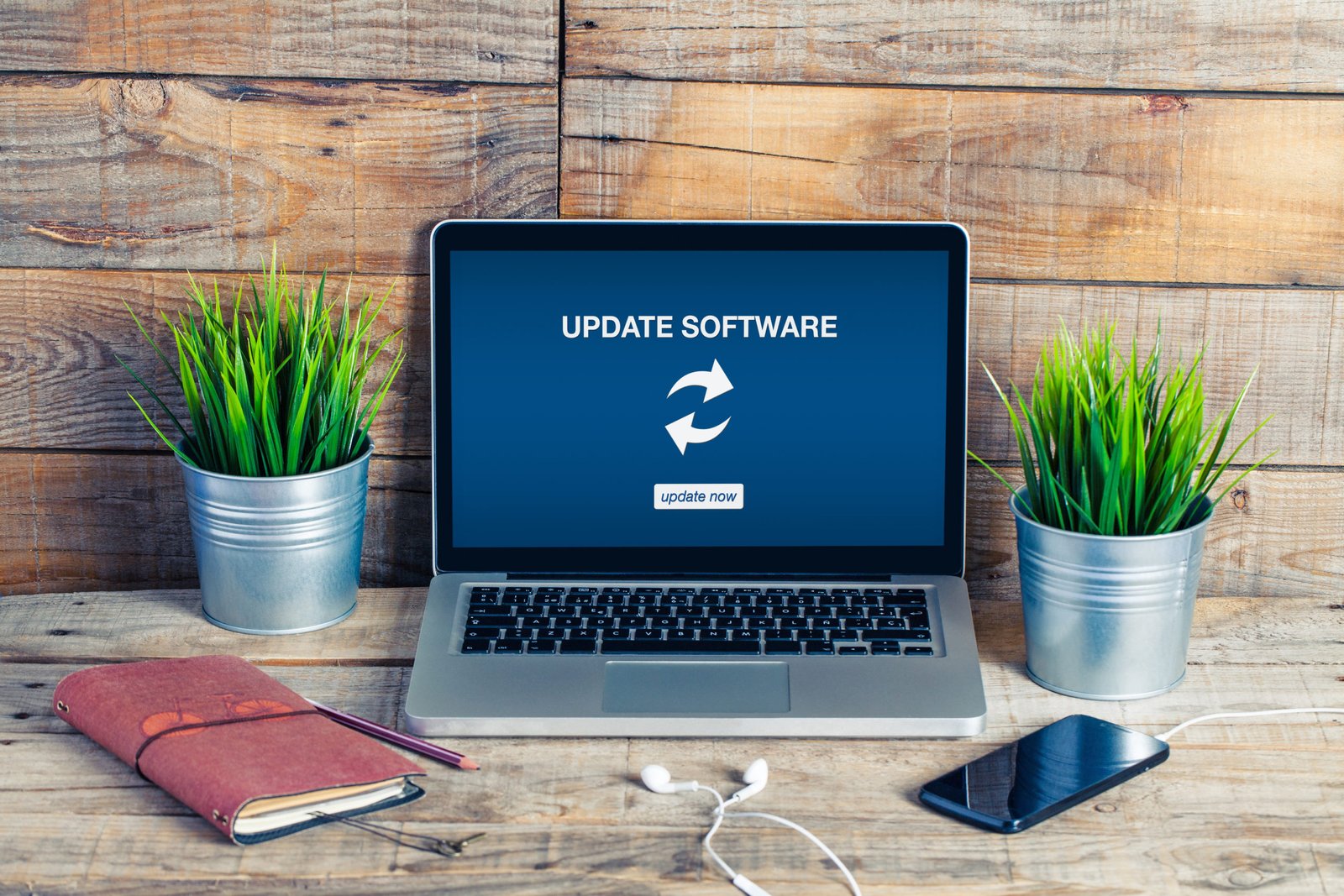In today’s digital age, the threat of cyberattacks and online security breaches continues to rise. As technology evolves, so do the tactics employed by cybercriminals, making it crucial for individuals to take proactive steps to safeguard their digital lives. This article will provide you with valuable insights and practical tips on how to protect yourself from cyber threats in 2023.
In 2023, cyber threats have become increasingly sophisticated and prevalent. Hackers are constantly developing new techniques to exploit vulnerabilities and gain unauthorized access to personal information, financial data, and even entire computer systems. As a result, it is essential for individuals to be proactive in implementing cybersecurity measures to mitigate the risks.
Read more: 5 Cybersecurity Threats That Could Cripple Your Business in 2023
Keep Software Up to Date
Table of Contents
- 1 Keep Software Up to Date
- 2 Strong and Unique Passwords
- 3 Enable Two-Factor Authentication (2FA)
- 4 Be Wary of Phishing Attempts
- 5 Secure Your Internet Connection
- 6 Regularly Back Up Your Data
- 7 Educate Yourself about Cybersecurity
- 8 Use Antivirus and Anti-Malware Software
- 9 Practice Safe Online Shopping and Banking
- 10 Be Cautious with Social Media Sharing
- 11 Avoid Unauthorized Downloads
- 12 Protect Your Mobile Devices
- 13 Secure Your Home Network
- 14 Conclusion
- 15 FAQs

One of the fundamental steps in protecting yourself from cyber threats is keeping your software up to date. Software updates often contain security patches that address vulnerabilities identified by developers. By regularly updating your operating system, web browsers, and applications, you ensure that you have the latest defenses against potential exploits.
Enabling automatic updates is highly recommended as it ensures that your software remains up to date without requiring manual intervention. Additionally, make it a habit to check for software updates regularly, especiall if automatic updates are not available for certain software.
Strong and Unique Passwords
Using strong and unique passwords is essential in protecting your online accounts from cyber threats. Avoid using easily guessable passwords such as “123456” or “password.” Instead, create complex passwords that include a combination of uppercase and lowercase letters, numbers, and special characters.
Furthermore, it’s crucial to use a different password for each online account. This way, if one account is compromised, the others will remain secure. Remembering multiple passwords can be challenging, so consider using a password manager. Password managers generate and store strong passwords for you, eliminating the need to remember them all.
Enable Two-Factor Authentication (2FA)
Two-factor authentication (2FA) adds an extra layer of security to your online accounts. With 2FA enabled, you’ll be required to provide a second form of verification, such as a unique code sent to your mobile device, in addition to your password. This ensures that even if someone manages to obtain your password, they still can’t access your accounts without the second factor.
Take advantage of 2FA whenever it’s available, especially for sensitive accounts like email, banking, and social media. Many popular online platforms and services offer this additional security feature, so be sure to enable it.
Be Wary of Phishing Attempts
Phishing is a common technique used by cybercriminals to trick individuals into revealing sensitive information or downloading malicious software. Be cautious of emails, messages, or websites that request personal information, financial details, or login credentials.
Pay attention to warning signs of phishing attempts, such as poor grammar, misspelled words, or suspicious email addresses. Legitimate organizations will never ask for sensitive information through email or unsolicited messages. If you receive a suspicious email, do not click on any links or download any attachments. Instead, independently verify the authenticity of the communication by contacting the organization directly.
Secure Your Internet Connection
Securing your internet connection is vital, especially when using public Wi-Fi networks. Public Wi-Fi networks are often unsecured, making it easier for hackers to intercept your data. To protect yourself, use a reliable virtual private network (VPN) when connecting to public Wi-Fi. A VPN encrypts your internet traffic, ensuring that your data remains private and secure.
Additionally, it’s important to encrypt your home Wi-Fi network. Change the default network name (SSID) and password of your router to prevent unauthorized access. Also, consider using the WPA2 or WPA3 security protocols, as they provide stronger encryption than outdated protocols like WEP.
Regularly Back Up Your Data
Backing up your data regularly is a crucial precautionary measure against cyber threats. In the event of a ransomware attack, hardware failure, or accidental deletion, having backups ensures that you don’t lose valuable information.
There are various methods to back up your data, including using external hard drives, cloud storage services, or both. Create a schedule to back up your files regularly and verify that the backups are successful. Cloud storage services offer the advantage of off-site storage, protecting your data even in the event of physical damage or theft.
Educate Yourself about Cybersecurity
Staying informed about the latest cybersecurity threats and best practices is essential for protecting yourself online. Keep up with reputable sources of information, such as cybersecurity blogs, news websites, and official security organizations. Educate yourself on common attack techniques, such as phishing, social engineering, and malware.
Consider participating in cybersecurity training programs or workshops to enhance your knowledge and skills. Many organizations and online platforms offer free or affordable cybersecurity courses. By understanding the techniques used by cybercriminals, you can better recognize and defend against potential threats.
Use Antivirus and Anti-Malware Software
Installing reputable antivirus and anti-malware software is crucial for protecting your devices from malicious software and potential cyber threats. Antivirus software scans your system for known viruses and malware, while anti-malware software provides additional protection against emerging threats.
Ensure that your antivirus and anti-malware software is up to date and set to perform regular scans. Many security software programs offer real-time protection, which actively monitors your system for suspicious activities and blocks potential threats. Additionally, be cautious when downloading and installing software from untrusted sources, as it may contain malware.
Practice Safe Online Shopping and Banking
Online shopping and banking are convenient but can also expose you to cyber threats. Protect your financial information by following these safety measures:
Shop on secure websites: Look for the padlock icon in the address bar and ensure that the website’s URL begins with “https://” which indicates a secure connection.
Avoid public computers or networks: Conduct financial transactions on trusted devices and secure networks.
Regularly review bank statements: Keep an eye on your financial statements for any suspicious activity or unauthorized transactions.
Be cautious with personal information: Only provide necessary information when making online purchases or banking transactions.
Verifying the authenticity of websites and ensuring they have proper security measures in place is essential to protect yourself from potential cyber threats.
Be Cautious with Social Media Sharing
Social media platforms offer a way to connect with others, but it’s important to be cautious with the information you share. Oversharing personal details can make you vulnerable to cyber threats, such as identity theft or social engineering attacks.
Adjust your privacy settings on social media platforms to control who can see your posts and personal information. Be selective about accepting friend requests or following people you don’t know. Think twice before sharing personal information, location, or travel plans publicly. Remember, once information is shared online, it can be challenging to completely remove it.
Downloading files from untrusted sources can introduce malware or other malicious software to your devices. Stick to reputable download platforms and sources. If you need to download software or files, ensure they come from legitimate sources and are scanned for malware before opening or executing them.
Always be cautious when clicking on pop-up ads or links that seem suspicious. These can lead to unintended downloads or phishing attempts. Use your judgment and common sense to determine whether a download source is trustworthy.
Protect Your Mobile Devices
Mobile devices, such as smartphones and tablets, are increasingly targeted by cybercriminals. Protect your mobile devices by implementing the following measures:
Secure your device with a strong password or biometric authentication, such as fingerprint or facial recognition.
Enable encryption to safeguard your data in case of loss or theft.
Only download apps from official app stores, and review the app permissions before installation.
Regularly update your device’s operating system and apps to ensure you have the latest security patches.
By implementing these measures, you can significantly reduce the risk of cyber threats targeting your mobile devices.
Secure Your Home Network
Your home network is the gateway to your connected devices and personal information. Follow these steps to secure your home network:
Change the default username and password of your router.
Use a strong password that combines letters, numbers, and special characters.
Enable network encryption, such as WPA2 or WPA3, to protect your Wi-Fi network.
Consider setting up a separate guest network for visitors, keeping your primary network secure.
Regularly update your router’s firmware to ensure it has the latest security patches.
Consider using a firewall to add an extra layer of protection to your network.
By securing your home network, you create a safer environment for all your connected devices and reduce the risk of unauthorized access.
Read more: Cybersecurity in the Age of the Internet of Things in 2023
Conclusion
Protecting yourself from cyber threats in 2023 requires a proactive approach and staying informed about the latest security measures. By following the steps outlined in this article, you can significantly enhance your online security and minimize the risk of falling victim to cyber threats.
Remember to keep your software up to date, use strong and unique passwords, and enable two-factor authentication for your accounts. Be cautious of phishing attempts and secure your internet connection when using public Wi-Fi networks. Regularly back up your data and stay educated about cybersecurity best practices.
Utilize antivirus and anti-malware software, practice safe online shopping and banking, and be mindful of the information you share on social media platforms. Avoid unauthorized downloads and take measures to protect your mobile devices. Finally, secure your home network to safeguard your connected devices.
By implementing these measures, you empower yourself with the knowledge and tools necessary to stay safe in the digital landscape of 2023.
FAQs
What should I do if I suspect a phishing attempt? If you suspect a phishing attempt, do not click on any links or provide any personal information. Instead, independently verify the authenticity of the communication by contacting the organization through official channels.
How often should I back up my data? It is recommended to back up your data regularly, depending on the frequency of changes and the importance of the information. Aim for weekly or monthly backups to ensure you have recent copies of your data in case of any incidents.
Are free antivirus software programs effective? While free antivirus software can provide some level of protection, premium or paid antivirus software often offers more advanced features and better threat detection rates. Consider investing in a reputable antivirus software for enhanced protection.
Should I use the same password for multiple accounts if it’s strong? No, using the same password for multiple accounts is not recommended. If one account gets compromised, it puts all your other accounts at risk. It’s best to use unique passwords for each account to maintain better security.
How can I secure my smartphone from cyber threats? To secure your smartphone, use a strong passcode or biometric authentication, keep your operating system and apps updated, and only download apps from official app stores. Be cautious of app permissions and avoid clicking on suspicious links or ads.




